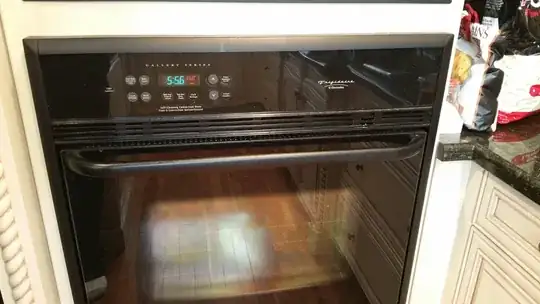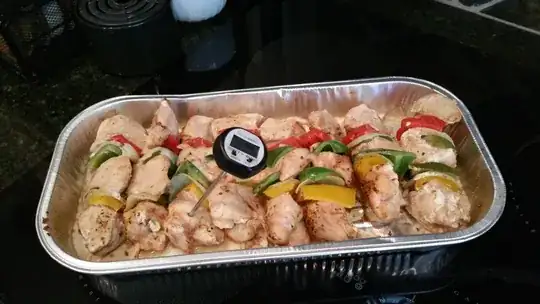Our home oven consistently undercooks food when we follow the recommended cooking directions.
Case and point: We just bought some chicken skewers from Costco. The directions say to cook them at 350F for 25-35 minutes. I just took them out after 35 minutes, and our digital probe thermometer read ~45C; well below the required 76C.
To measure, I found the thickest piece of meat I could find, and pushed the probe in, taking care not to go all the way through and touch the metal container that they're being cooked in.
I know it's likely not the oven not getting to temperature. It's a fairly new oven with a digital display that shows the current oven temperature (it was at 350F when I put them in). We also have a little bi-metal thermometer that goes in the oven itself. Last time we tested it, it agreed with the reading on the front of the oven.
It's also not likely the probe thermometers. We had 2 old bi-metal probes. I didn't trust them though (since apparently they can lose accuracy as the metal ages), so I went out and bought a new digital probe (mentioned above). After calibrating the 2 old ones one via the ice-water method and testing them on some chicken, all 3 probes agreed with each other within 2C.
We do live at a fairly high altitude (Calgary, Alberta, Canada [1,045 m, according to Google]), which if I recall, can mess with cooking times. I can't see that having this much of an effect though.
What are the possible problems here?
The oven:
Checking the temperature after it had been in for 45 minutes (10 minutes extra). Note it's only at 47.9C:
I just took them out again after 55 minutes, and it was only at 56C. I put them in for another 10 (which in total will have been an extra half an hour).

